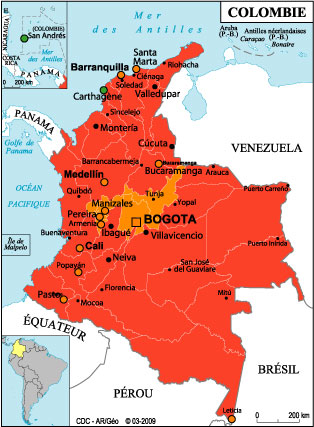Il se remarque a peine. Un tas inerte de couvertures sombres et usées. Un coin de rue, tout juste un bout de trottoir. On le passerait sans même s'en rendre compte. Pourtant, un sursaut dans son sommeil lui fait bouger le pied, et là, brusquement, l'insignifiant ramassis de linge sale découvre un corps rachitique, si petit, si recroquevillé, que l'on ne discerne pas bien qui de l'enfant ou de l'homme y passe sa nuit.
Un regard autour, rien a changé. Les passants continuent leur promenade dominicale, une poignée de vendeurs se disputent leur attention en paroles bienveillantes, quelques voitures viennent et disparaissent dans une avenue de la capitale. En Colombie le chiffre officiel est tombé il y a un mois: 20 millions de pauvres, soit presque la moitié de la population totale. Parmi ceux-là, plus de 5 millions d'indigents. Un quotidien d'errance inlassable dans les rues des grandes villes, de mandiance, de fouille parmi les detritus, et finalement un banc, le coin d'un pont, où s'achevent des nuits longues et solitaires.
On les remarque à distance, au premier coup d'oeil: démarche claudiquante, les epaules recourbées, une couverture sur l'epaule et un ensemble de guenilles noirâtres en guise de vetement. Ils portent souvent un gros sac poubelle, qu'ils remplissent ici et là, d'objets trouvés dans la rue. Ils se remarque de loin et vous remarquent également: “Mona monita, una monedita?” Quelques-uns insistent, vous suivent, certains parfois deviennent agressifs, mais au final, chacun fini par suivre sa route. Evidemment quelques pesos s'offrent en chemin, mais quel geste bien absurde face à une détresse humaine qui se compte en millions.
Ils sont là, vous interpellent, vous font changer de trottoir, ils sont là mais se remarquent à peine. Car finalement ici comme ailleurs, la ville se vit sans les voir...






